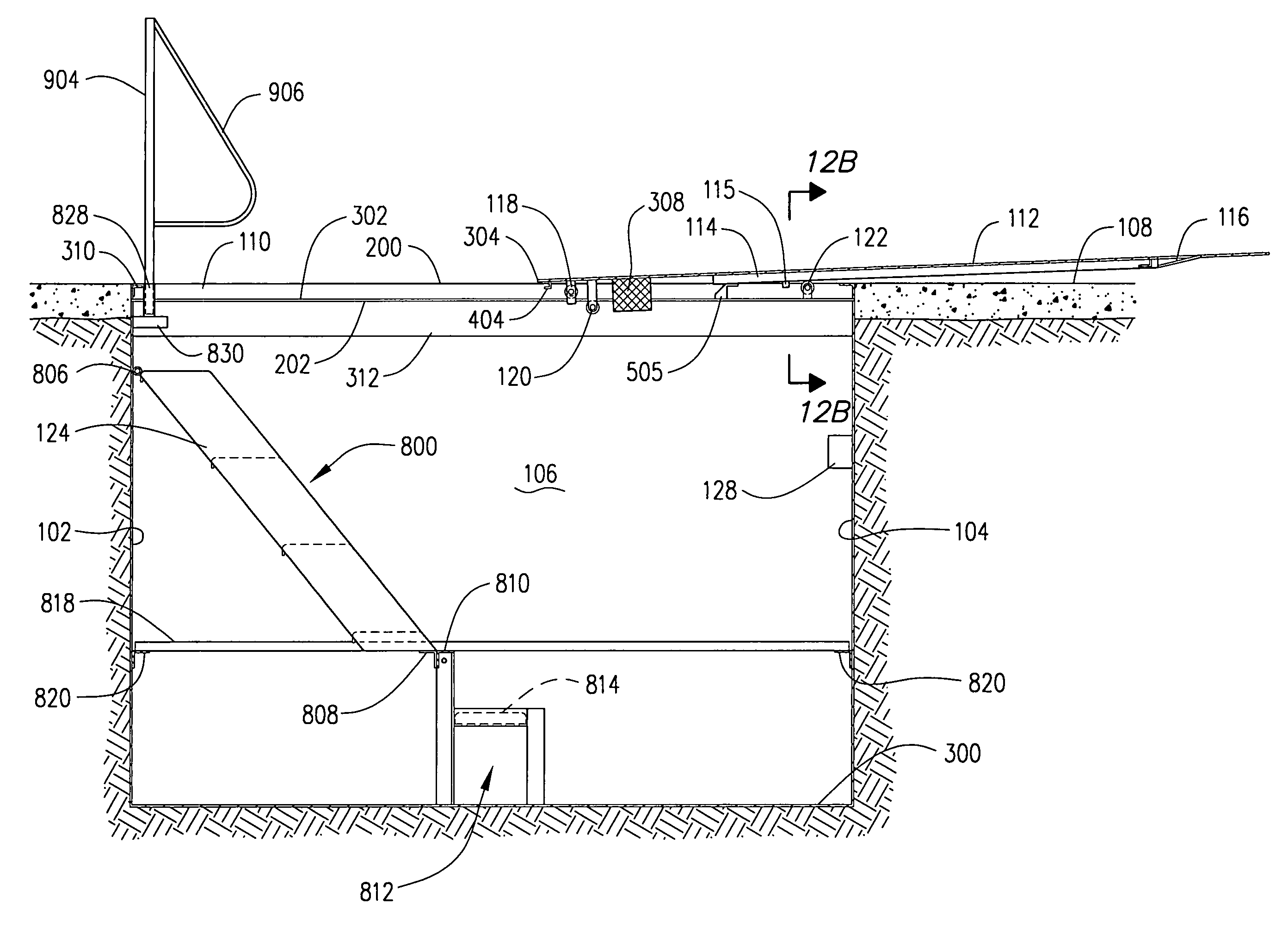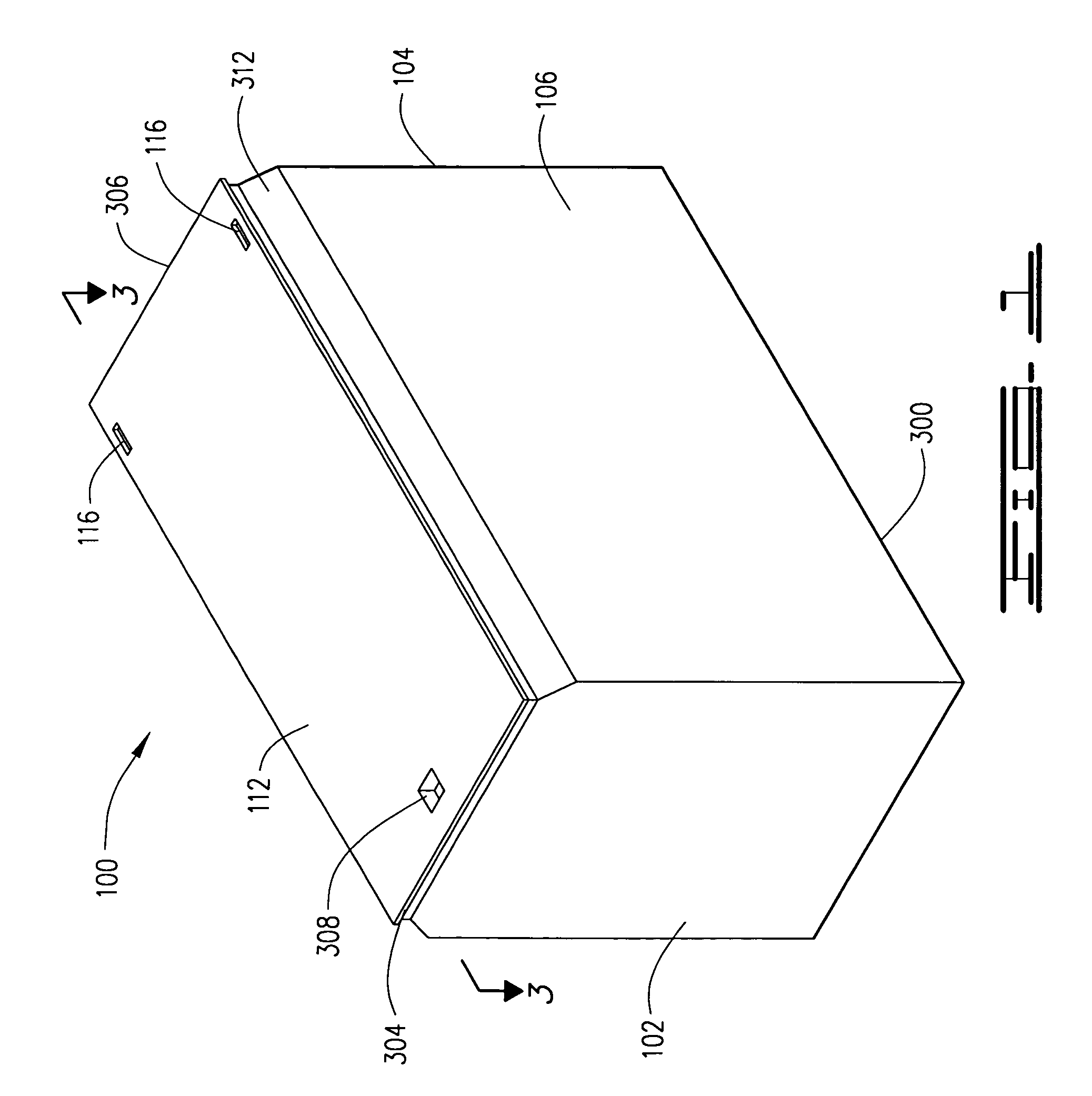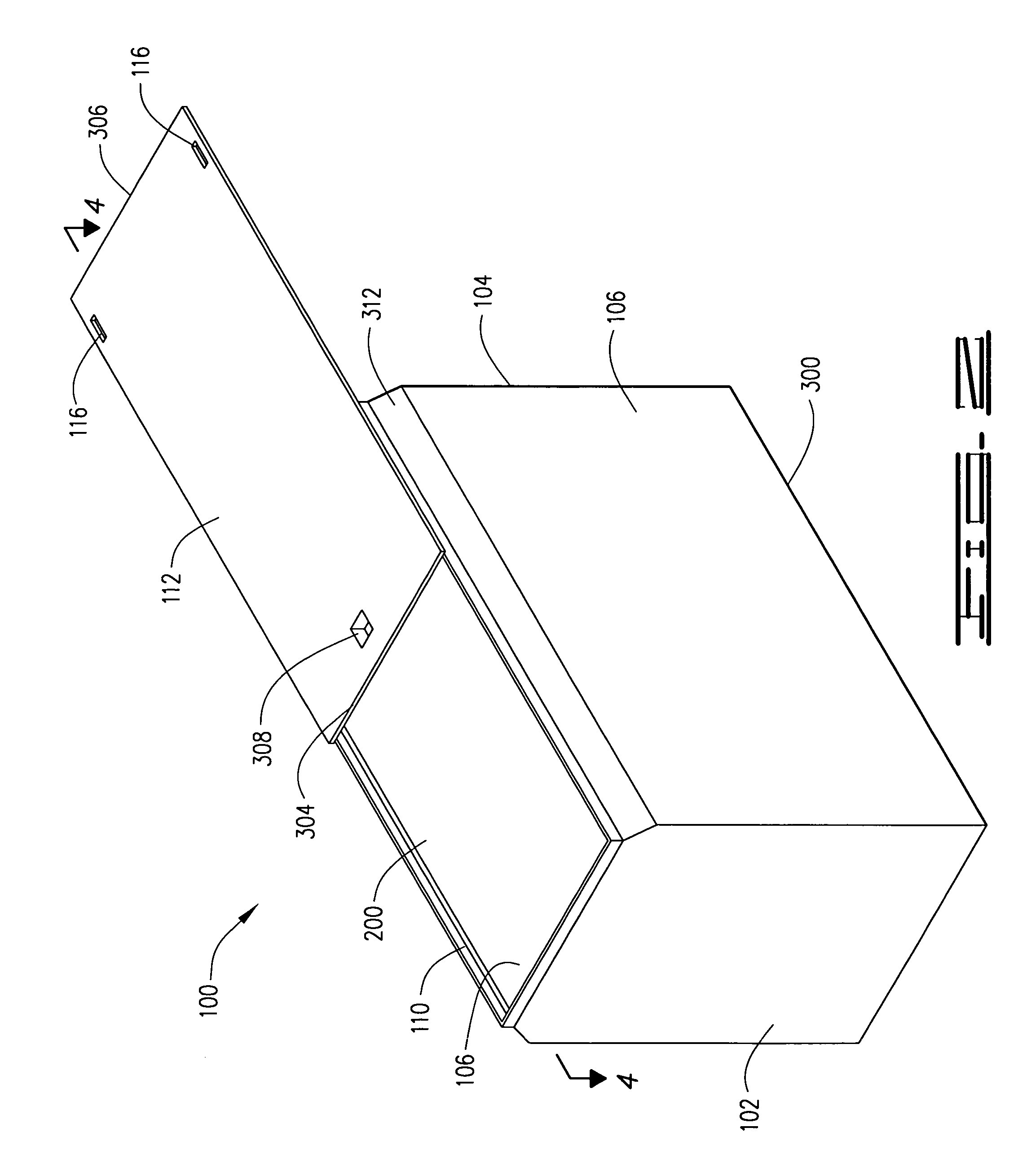In-ground shelter
- Summary
- Abstract
- Description
- Claims
- Application Information
AI Technical Summary
Benefits of technology
Problems solved by technology
Method used
Image
Examples
Embodiment Construction
[0031]The invention will now be described with reference to the drawings. FIG. 1 shows the present invention in perspective with the lid 112 in a closed position. The shelter 100 has a lid 112, a front wall 102 opposed to a back wall 104, two opposing side walls 106 and a bottom 300. Together, these walls, the lid and the bottom form a substantially rectangular box-like structure. The bottom 300 will preferably be substantially flat. FIG. 2, another perspective view, shows the lid 112 in an open position with the trailing edge 304 more closely adjacent to the back wall 104. In the closed position, the trailing edge 304 of the lid 112 is adjacent to the front wall 102, and the leading edge 306 of the lid 112 is adjacent to the back wall 104.
[0032]The side walls 106 are shown with an inwardly tapered section 312 near the open top, whereby the size and weight of the lid are reduced and cars with smaller wheel bases are able to park above the lid without having to drive thereon. If the ...
PUM
 Login to View More
Login to View More Abstract
Description
Claims
Application Information
 Login to View More
Login to View More - R&D
- Intellectual Property
- Life Sciences
- Materials
- Tech Scout
- Unparalleled Data Quality
- Higher Quality Content
- 60% Fewer Hallucinations
Browse by: Latest US Patents, China's latest patents, Technical Efficacy Thesaurus, Application Domain, Technology Topic, Popular Technical Reports.
© 2025 PatSnap. All rights reserved.Legal|Privacy policy|Modern Slavery Act Transparency Statement|Sitemap|About US| Contact US: help@patsnap.com



